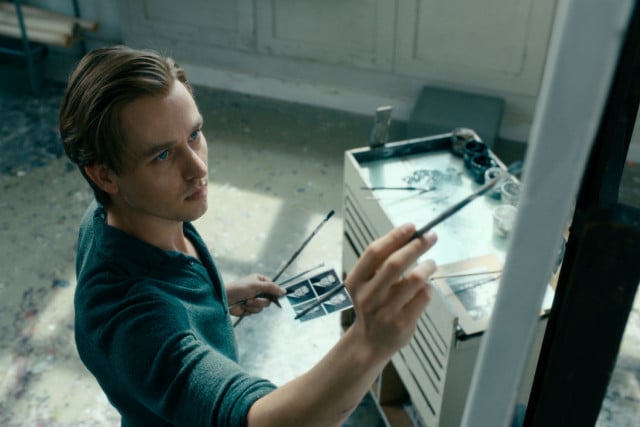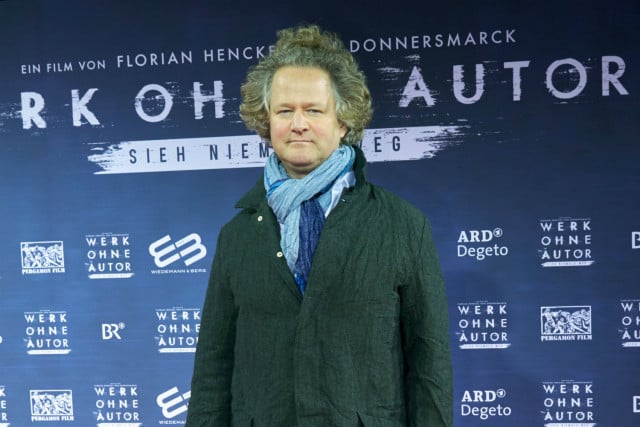Never Look Away (called 'Werk ohne Autor' in the original German) has been nominated in the Oscar's Best Foreign Language Film and Best Cinematography categories.
But the director and the real-life artist the film is partly based on are caught up in a public spat regarding the accuracy of the film
The film's director “managed to abuse and grossly distort (my) biography,” says Dresden-born artist Gerhard Richter.
The film follows Kurt Barnert – played by Tom Schilling, and is partly based on Richter – who experienced various family traumas as a result of World War II, including his aunt being euthanized by the Nazis.
Richter, like the film´s main character, found initial success in East Germany before eventually defecting to the West to build a life there.
 Shilling's character Kurt Barnert in 'Never look away'. Photo: DPA
Shilling's character Kurt Barnert in 'Never look away'. Photo: DPA
Room for creativity?
Director Florian Henckel von Donnersmarck told The New Yorker that Richter´s experiences during his adolescence and eventual success as an artist showed great resilience and demonstrated the power of art.
“It gives us that wonderful feeling that our suffering can be of use,” Donnersmarck told the magazine. Richter, according to the director, openly shared more of his story when they met in 2015.
Donnersmarck, with Richter´s permission, recorded their meetings.
Donnersmarck, who also wrote and directed the famous GDR-based drama The Lives of Others, admitted to The New Yorker that he left some room in his script for creativity.
“I didn’t want it to be a bio-picture per se,” Donnersmarck said. “Sticking exactly to every fact and chronology tends to weaken something. Citizen Kane would be a lesser film if it were called ‘Citizen Hearst.’”
Richter refutes this.
In a letter to the New Yorker, journalist Dana Goodyear, the Cologne-based painter said he told Donnersmarck after October last year, however, Richter told the German Press Agency (DPA) that he found the film too “reißerisch,” or 'sensational'.
Donnersmarck said he told Richter he would not say which events featured were true and which were fiction, forcing the public and journalists to have to guess. The tactic would also provide Richter some privacy.
'A spiritual biography'
“Whenever the conversation turns to you, I will say that it is specifically not a bio-pic of Gerhard Richter but the story of the fictional painter Kurt Barnert,” Donnersmarck wrote to Richter in a letter provided to The New Yorker.
 Director Florian Henckel von Donnersmarck at the premiere of the film. Photo: DPA
Director Florian Henckel von Donnersmarck at the premiere of the film. Photo: DPA
He also proposed to the Oscar-winning director that the protagonist´s profession change to a different artistic field, like a writer or musician.
Richter claims to have written to Donnersmarck that he did not have permission to use his name or paintings in relation to the film. Donnersmarck, he told the New Yorker, had agreed to this, but his actions spoke otherwise.
“In reality, he has done everything to link my name to his movie…he managed to abuse and grossly distort my biography! I don’t want to say more about this,” Richter wrote to Goodyear.
In the magazine profile of him, Donnersmarck appeared understanding of Richter´s discomfort, but also expressed disappointment that he did not see the film.
“I put in a lot of what computer-game programmers call Easter eggs, things only he would be able to decipher, little love letters to him,” Donnersmarck told Goodyear.
“It’s too bad he didn’t see it, but I can understand it a little bit. If I imagine someone taking my life story and putting a spin on it, either it would be super-painful.”
When asked by DPA on Tuesday what the Golden Globes and Oscar nominations mean to him, Donnersmarck did not address this specific controversy.
However, he said, “Such (nominations) may be even more important than they were 10 years ago because the world we live in has just become very loud – so much media, so much content.“
Also speaking to DPA, the actor in Never Look Away and The Lives of Others, Sebastian Koch, said on Wednesday he hopes the Oscar nomination gives his latest film a second chance in Germany. He also addressed what he views as unfair criticism of the film.
“Nobody has to like the film. But it should be treated with respect. And unfortunately that wasn't the case here,” Koch said.
Never Look Away is still showing in some cinemas in Germany and the 86-year old artist it partly depicts is still exhibiting his work in Germany and throughout the world.
Richter´s art is currently on display at C / O Berlin, Galerie Thomas Zander in Cologne, and Galerie Ludorff in Düsseldorf among other locations.
The all-star Oscars ceremony takes place on February 25th in Los Angeles.



 Please whitelist us to continue reading.
Please whitelist us to continue reading.
Member comments